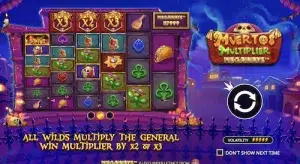Understanding the Roulette Wheel Layout
Many players underestimate the importance of the roulette wheel layout. Each roulette wheel—whether American or European—has a distinct arrangement that impacts the house edge. The American version features an extra ’00’ slot, which increases the house edge to about 5.26%, whereas the European wheel stands at a more favorable 2.7% due to having one less slot.
When approaching the roulette table, always opt for the European wheel when possible. This alone can enhance your winning odds, simply by selecting the game version with better statistical outcomes for the player.
Mastering Inside and Outside Bets
Roulette offers a variety of betting options, each with different payouts and odds. Understanding these can significantly influence your strategy and increase your potential to win.
Inside Bets: High Risk, High Reward
Inside bets are placed on specific numbers or small groups of numbers. They offer higher payouts but come with lower odds of winning. For instance, a straight bet (betting on a single number) pays 35:1 but has only a 2.7% chance of winning on a European wheel. Strategies involving inside bets often focus on covering numbers that are close to each other on the layout, increasing the chance that the ball lands near your wager without requiring an exact match.
Outside Bets: Lower Payouts, Higher Odds of Winning
Outside bets cover larger groups of numbers and offer higher odds of winning, but with smaller payouts. Bets on red or black, odd or even, and high (19-36) or low (1-18) numbers pay 1:1 and are ideal for conservative strategies. A common approach is the Martingale strategy, where you double your bet after a loss. However, this requires a significant bankroll and a table without low maximum bet limits to be effective.
Bankroll Management
Effective bankroll management is vital in maximizing your time and potential at the roulette table. Set a limit for your playing session and stick to it. Decide in advance how much you are willing to lose, and do not exceed this amount. Similarly, it’s wise to set a winning goal. If you reach this goal, it’s a good practice to cash out your profits and perhaps continue playing with your initial stake.
Utilizing Roulette Betting Systems
Several betting systems promise to help manage bets and potentially increase winnings. While no system can guarantee success due to the random nature of roulette, they can add structure to your play.
The Fibonacci System
The Fibonacci sequence is a series of numbers where each number is the sum of the two preceding ones. You start by betting a small amount. If you lose, you move one step down the sequence for your next bet. When you win, you move back two numbers. This system is less aggressive than the Martingale but still requires attention and a decent bankroll to handle potential losses.
The D’Alembert System
This system involves increasing your bet by one unit after a loss and decreasing it by one unit after a win, basing your next bet on the outcome of the previous one. It’s a safer progression than the Martingale and is suited for those looking for a more conservative betting strategy.
Practical Takeaways for Roulette Success
1. Choose European Roulette: Always opt for the European version for better odds.
2. Mix up your bets: A combination of inside and outside bets can balance the risk and reward.
3. Stick to your budget: Never bet more than you can afford to lose, and keep your sessions enjoyable by managing your bankroll wisely.
4. Use systems with caution: Remember, betting systems do not change the odds of the game. Use them to manage your funds and understand the risk involved.
In roulette, success comes from understanding the game mechanics, managing your money wisely, and keeping your playing decisions smart and disciplined. By following the strategies discussed, you’ll not only enhance your enjoyment of the game but also increase your chances of making profitable returns.

David Garato is a luminary in gaming journalism, renowned for peeling back the curtain on the gaming world with his witty and insightful commentary. A decade into weaving stories from the pixelated edges of indie games to the expansive universes of AAA titles, David’s work is a thrilling blend of analysis and adventure. When not writing, he’s live-streaming, sharing his gaming exploits with an engaged and growing audience. David doesn’t just write about games; he lives them, making him a trusted guide in the gaming community.
















